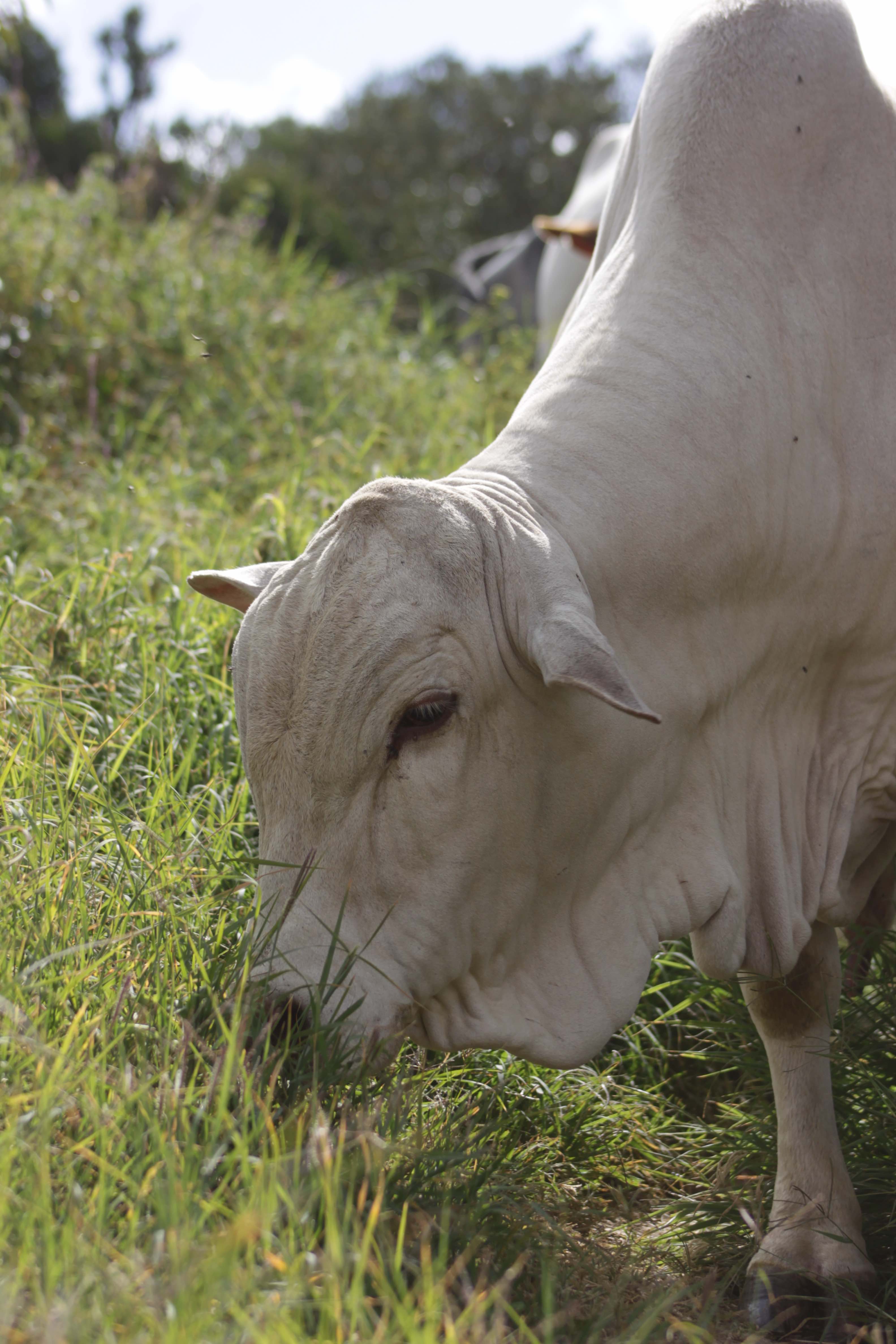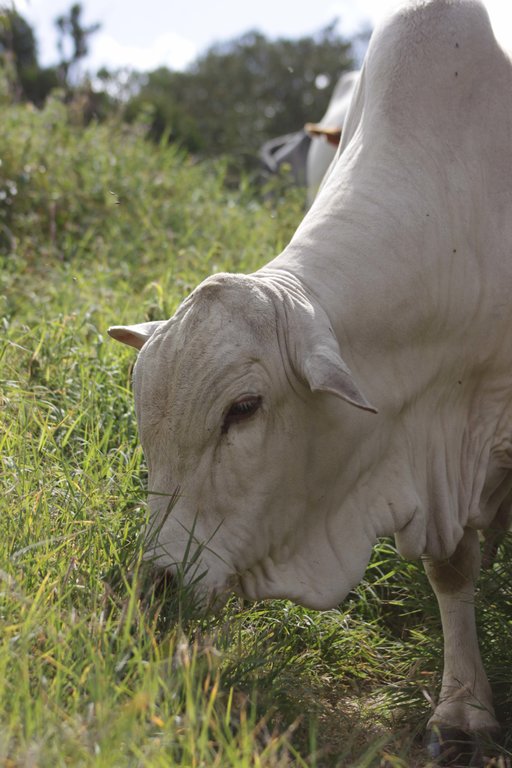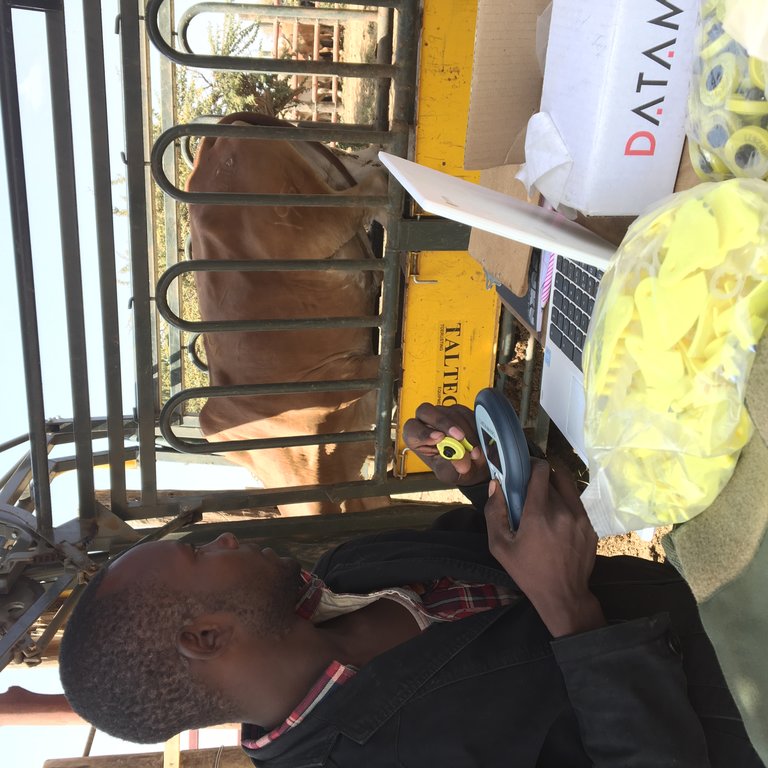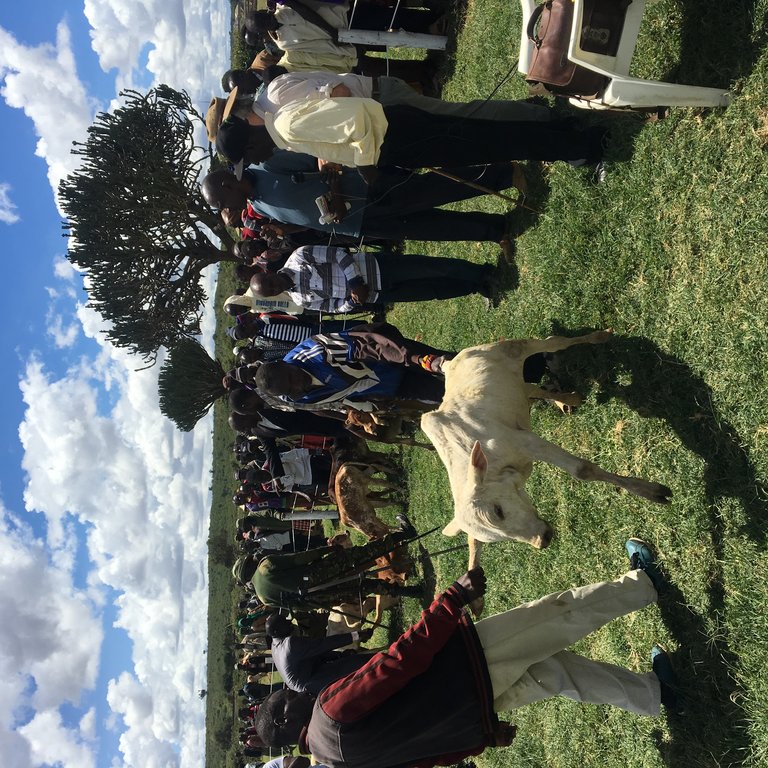Mugie Resource Sharing and Livestock to Markets Program [เคนยา]
- ผู้สร้างสรรค์:
- การอัพเดท:
- ผู้รวบรวม: Peter Tyrrell
- ผู้เรียบเรียง: Henry Bailey
- ผู้ตรวจสอบ: Hanspeter Liniger, Rima Mekdaschi Studer, Donia Mühlematter, Joana Eichenberger
Mugie Trading Stock (MTS)
approaches_3427 - เคนยา
ดูส่วนย่อย
ขยายทั้งหมด ย่อทั้งหมด1. ข้อมูลทั่วไป
1.2 รายละเอียดที่ติดต่อได้ของผู้รวบรวมและองค์กรที่เกี่ยวข้องในการประเมินและการจัดเตรียมทำเอกสารของแนวทาง
วิทยากรหลัก
ผู้ใช้ที่ดิน:
เคนยา
ชื่อของโครงการซึ่งอำนวยความสะดวกในการทำเอกสารหรือการประเมินแนวทาง (ถ้าเกี่ยวข้อง)
Book project: Guidelines to Rangeland Management in Sub-Saharan Africa (Rangeland Management)1.3 เงื่อนไขที่เกี่ยวข้องกับการใช้ข้อมูลที่ได้บันทึกไว้ผ่านทาง WOCAT
วันที่เก็บรวบรวมข้อมูล (ภาคสนาม):
26/03/2018
ผู้รวบรวมและวิทยากรหลักยอมรับเงื่อนไขเกี่ยวกับการใช้ข้อมูลที่ถูกบันทึกผ่านทาง WOCAT:
ใช่
2. คำอธิบายของแนวทาง SLM
2.1 การอธิบายแบบสั้น ๆ ของแนวทาง
Selected livestock are bought from the communities, then fattened and marketed by the Mugie conservancy management on a ‘resource sharing’ basis – generating income for both the conservancy and the community. This encourages the development of local value chains and market-based incentives for better rangeland management and animal husbandry outside the conservancy area. Breeding, agricultural shows and on-going education in sustainable rangeland management provide support for the longer-term.
2.2 การอธิบายอย่างละเอียดของแนวทาง
การอธิบายอย่างละเอียดของแนวทาง:
Mugie conservancy is a private company covering nearly 20,000 hectares. It is involved in ecotourism, wildlife conservation and livestock production. Simultaneously, Mugie cooperates with community members surrounding the conservancy by fattening and marketing their cattle. Both parties share in the risks and successes of the initiative – and this is key to building trust. Community livestock owners ‘resource share’ in the program by supplying selected animals in line with standards and a quota stipulated by the conservancy. Currently the cattle are weighed and graded at the conservancy headquarters, but a purpose-built facility on the edge of the conservancy is being constructed for this purpose.
While the conservancy manages the livestock from the community, there is a joint stake in the livestock as the eventual profits are divided. The conservancy takes over full management of the livestock from the community members including herding and grazing, dipping, providing veterinary treatment, monitoring weight, marketing and sales. The division and remittance of funds generated is according to the contract agreed with the community committee. Contracts vary in nature and are often no more than just verbal agreements based on trust. The original owners have visiting rights on Saturdays during weighing and the spray-race, where they inspect their animals and interact with conservancy livestock staff.
The program aims to build value chains, encourage livestock businesses and the local economy through provision of a fair price market for local communities’ products. It also strives to build peace across communities and ethnicities - there is no room for fighting when talking business. Developing market-based incentives to produce better quality livestock is another aim, thus stimulating improved rangeland management and a higher standard of animal husbandry. It is also hoped to build a sustainable livestock business for the conservancy to pay for its wildlife and biodiversity conservation efforts - because conservation doesn’t pay for itself and tourism is volatile, and can’t cover conservations costs in most situations.
The total turnover of the program to-date (April 2018) is approx. US $ 825,000. The conservancy takes 10% of the sales, plus US $ 4.00 per animal per month to cover grazing, animal health and management. Cattle are sold live to various brokers and dealers, depending on the market conditions and the quality of the cattle.
This process of community participation and partnership building is nurtured and reinforced in various ways: (i) through continuous outdoor meetings (updates on changes needed to agreements; requirements for livestock; updating on conditions of the market; talking about the need to maintain a supply of high quality livestock through better rangeland management, etc.); (ii) by development of community committees; (iii) establishing community SACCOs (co-operatives registered with the county government); and (iv) drawing up contracts between the committees and the conservancy.
The implementation of this approach is an ongoing, dynamic and ever-evolving process. However the broad sequence is as follows: (i) introduction of the approach to communities, encouraging them to embrace the idea of improving livestock quality and to enter into an agreement with the conservancy, (ii) formation of committees within the community to ensure that livestock owners are heard and can agree the value of livestock, as well as avenues for communication, complaints and negotiations, (iii) negotiation of contracts with these committees, covering revenue sharing and proposed number of livestock involved, (iv) livestock management, fattening and marketing by Mugie conservancy, (v) continuous monitoring and reviews.
As implementation progresses there are also breeding schemes to introduce better genetic material into community livestock. These improved breeds produce cattle of higher quality for the beef market. Ongoing education and an annual agricultural show increase the potential and awareness of sustainable range management approaches and opportunities to all members of surrounding communities, including livestock producers: men, women and the youth.
2.3 รูปภาพของแนวทาง
2.5 ประเทศ ภูมิภาค หรือสถานที่ตั้งที่ได้นำแนวทางไปใช้
ประเทศ:
เคนยา
ภูมิภาค/รัฐ/จังหวัด: :
Laikipia
ข้อมูลเฉพาะเพิ่มเติมของสถานที่ตั้ง:
Louniek region
2.6 วันที่เริ่มต้นและสิ้นสุดของแนวทาง
ระบุปีที่เริ่ม:
2017
ถ้าไม่รู้ปีที่แน่นอนให้ประมาณวันที่ที่ริเริ่มใช้แนวทางนี้ :
น้อยกว่า 10 ปี (เร็วๆนี้)
2.7 ประเภทของแนวทาง
- เป็นนวัตกรรมท้องถิ่นล่าสุด/ นวัตกรรมใหม่
2.8 เป้าหมายหรือวัตถุประสงค์หลักของแนวทาง
1. Promote peace & stability
2. Incentivise and educate in sustainable rangeland management and use of natural resources
3. Provide local market opportunities
4. Encourage and educate in responsible livestock production in rural areas
5. Encourage local economic growth
6. Ensure sustainable food production
7. Encourage the formation of strong institutions in the area (such as co-operatives, businesses and business-orientated group ranches)
2.9 เงื่อนไขที่เอื้ออำนวยหรือเป็นอุปสรรคต่อการนำเทคโนโลยีภายใต้แนวทางนี้ไปปฏิบัติใช้
บรรทัดฐานและค่านิยมทางสังคม วัฒนธรรม ศาสนา
- เอื้ออำนวย
The use of traditional structures of elders is a great help in bringing members of local communities on board with the program, especially within the Pokot ethnic group.
- เป็นอุปสรรค
Traditional social structures amongst pastoralist communities are commonly collapsing, and therefore the prevailing social norm is for people to try to benefit themselves rather than helping the community at large. Moreover, traditional social structures are dominated by men. Most approaches target elders and warrior age sets to try and distribute knowledge of rangeland management and therefore they do not reach those actually doing the majority of animal husbandry work and having the greatest impact upon the rangelands and biodiversity - namely the women and children.
การมีไว้ให้หรือการเข้าถึงแหล่งการเงินและบริการ
- เอื้ออำนวย
There has been an initial boost in the area from some banking services to help communities open bank accounts, and encourage the formation of cooperatives. Using these institutions greatly reduces the burden of program administration.
- เป็นอุปสรรค
The majority of people in the area do not have local access to financial institutions. This creates a problem, as without the foundation of trust/insurance that financial services bring, facilitating sustainable trade, community members don't have the will or ability to invest in productive activities such as sustainable rangeland management and animal husbandry.
กรอบแนวทางในการดำเนินการด้านกฎหมาย (การถือครองที่ดิน สิทธิในการใช้ที่ดินและน้ำ)
- เป็นอุปสรรค
The sub-division of historical ranches in the area has been done on a scale that creates blocks that are too small (12-20 hectare plots) for sustainable livestock activities to be supported. Most of these do not have their own sources of water and this sub-division of the landscape means the greater area is not being managed to maintain essential ecosystem services such as the preservation of groundwater, soils, native forest or grassland biodiversity.
นโยบาย
- เอื้ออำนวย
The 'Amaya Initiative' that has been set up by the current Governor of Laikipia to boost cooperation between between regional county governments has had initial successes in assisting the project through increased security and encouraging peace and stability. It has yet to provide other enabling functions such as control of cattle movement to prevent disease, encouraging/facilitating markets, etc.
การกำกับดูแลที่ดิน (การตัดสินใจ การนำเอาไปปฏิบัติใช้ และการบังคับใช้)
- เป็นอุปสรรค
The lack of law enforcement controlling the movement of livestock hinders efforts to implement value adding techniques and approaches in sustainable rangeland management and associated livestock management approaches through disease, livestock theft, and unregulated utilisation of natural resources. The lack of enforcement of laws supporting the rights of landowners and businesses discourages investment on any scale. The penalties for transgressing some of these laws are also very weak and not commensurate with the risks that their breaches pose to landowners.
ความรู้เกี่ยวกับ SLM การเข้าถึงการสนับสนุนด้านเทคนิค
- เป็นอุปสรรค
The basic understanding of lifecycles of common wild fodder plants is lacking. This means that the majority of community led initiatives to manage natural resources and mitigate against climate based crises cause more harm to sustainable land management efforts in the medium to long term.
ตลาด (จัดซื้อปัจจัยนำเข้า ขายผลิตภัณฑ์) และราคา
- เป็นอุปสรรค
Poor market access makes it difficult to sustain the program across all the potential revenue situations. There are good markets for well-finished livestock. However, culled cows, for instance, cannot be sold - and these continue to drain resources, both financial and natural. Institutions with large contracts that could provide offtake for such animals do not offer market prices that are sustainable for local businesses. The development of local infrastructure in marketing inputs (medicines, feeds, supplements, extension services, etc.), and value chain addition (slaughter houses, canning factories, cold chain storage, etc.) would help break apparent monopolies that seem to be retarding local markets.
ปริมาณงานที่ทำได้ กำลังคนที่มีให้
- เป็นอุปสรรค
There is a lack of availability of manpower with the correct skills and training in administration and management and with an understanding and willingness to work in the agricultural sector.
อื่นๆ
- เป็นอุปสรรค
Availability of seed funds to encourage entrepreneurship and development of local businesses. Most funds seem to be channelled through NGOs who have an aversion to partnership in commercial ventures. Many training sessions that are run by NGOs in surrounding pastoralist areas, when discussing potential stakeholders, rarely mention local businesses. This serves to develop societies and communities reliant on handouts, unwilling to develop their local value chains. The prevailing NGO, development and aid attitude that avoids large for-profit businesses needs to change. Such businesses can be a lynchpin in regional value chains that encourage sustainable approaches, as they guarantee local supply chains and local customer bases, raising local economies, peace and strong institutions.
3. การมีส่วนร่วมและบทบาทของผู้มีส่วนได้ส่วนเสียที่เกี่ยวข้อง
3.1 ผู้มีส่วนได้ส่วนเสียที่เกี่ยวข้องในแนวทางนี้และบทบาท
- ผู้ใช้ที่ดินระดับท้องถิ่นหรือชุมชนระดับท้องถิ่น
Land and livestock owners from the immediate area surrounding the private conservancy (from the Pokot, Samburu & Turkana tribes).
Local land users/communities make committees to allocate quotas of livestock to come in to the MTS resource sharing and livestock-to-market program. It is also their responsibility to continue to bring suitable animals for the program. The committees are those to communicate changes and updates to the terms of agreement to the wider community and to help mediate in disputes.
- องค์กรที่ขึ้นอยู่กับชุมชน
Chemiot SACCO - a Pokot youth cooperative set up in the wake of starting the MTS scheme.
Mugie wishes to encourage the development of strong institutions in the area. Mugie hopes increasingly to deal with SACCOs as opposed to committees.
- ผู้เชี่ยวชาญ SLM หรือที่ปรึกษาการเกษตร
RPLRP (Regional Pastoralist Livelihoods Resilience Program) and NDMA (National Drought Management Authority).
Currently, these stakeholders have shown an interest in the project and wish to see how it can be scaled up.
- นักวิจัย
Masters and Doctorate students
There has been a little interest from these stakeholders in using the information and databases developed by Mugie. However there has been no feedback and little uptake from them.
- ภาคเอกชน
Mugie Conservancy, various Mugie Trade partners.
To manage the livestock, to finish (fatten) them for the market, market the livestock, remit funds from sales, manage the contracts, provide education on improved rangeland management and animal husbandry. Trade partners provide other inputs and access to markets.
- รัฐบาลระดับท้องถิ่น
Laikipia County Government, Samburu County Government, Baringo County Government
The respective county governments have shown interest in supporting and further developing the MTS program in order to help develop strong institutions, economy, businesses opportunities and rehabilitate rangelands for better livelihoods in the Amaya Triangle area.
ถ้ามีผู้มีส่วนได้ส่วนเสียหลายคนที่เกี่ยวข้องให้ระบุหน่วยงานตัวแทน:
Mugie Conservancy
3.2 การเกี่ยวข้องของผู้ใช้ที่ดินระดับท้องถิ่นหรือชุมชนระดับท้องถิ่นในช่วงต่างๆของแนวทาง
| ความเกี่ยวข้องของผู้ใช้ที่ดินระดับท้องถิ่นหรือชุมชนระดับท้องถิ่น | ระบุผู้ที่มีส่วนเกี่ยวข้องและอธิบายกิจกรรม | |
|---|---|---|
| การริเริ่มหรือการจูงใจ | ปฏิสัมพันธ์ | Both Mugie conservancy and local land users were involved in negotiations over the period of conflict around the 2017 Kenya presidential elections - out of this innovative resource sharing approaches were developed to benefit all stakeholders. |
| การวางแผน | ปฏิสัมพันธ์ | Community leaders were presented with the options and limitations by Mugie management. Committees were then formed under several different themes, and they then negotiated contracts. |
| การดำเนินการ | ปฏิสัมพันธ์ | Community committees continue to be the main point of contact as the program develops organically, balancing the market, environment and needs of various stakeholders. However, the main implementer continues to be Mugie but with integrated community support. Changes in the market are seeing more individual community members using the scheme to market livestock themselves without Mugie involvement, but using the reputation of the brand. |
| การติดตามตรวจสอบหรือการประเมินผล | ปฏิสัมพันธ์ | Communities raise problems that occur and work hand in hand with Mugie management to resolve issues. |
3.4 การตัดสินใจเลือกใช้เทคโนโลยี SLM
ระบุผู้ที่ทำการตัดสินใจเลือกเทคโนโลยีมากกว่าหนึ่งวิธีไปปฏิบัติใช้:
- ผู้เชี่ยวชาญ SLM เป็นผู้ตัดสินใจหลัก ที่ติดตามให้คำปรึกษากับผู้ใช้ที่ดิน
การอธิบาย:
Mugie handles the administration of the program and therefore decides on what technologies best fit their management requirements. Communities are always consulted on all changes and developments of the program.
ระบุว่าการตัดสินใจตั้งอยู่บนพื้นฐานของ:
- การประเมินความรู้ SLM ที่ได้ทำการบันทึกไว้เป็นอย่างดี (การใช้ข้อมูลในการตัดสินใจ)
- สิ่งที่ค้นพบจากงานวิจัย
- ประสบการณ์และความคิดเห็นส่วนตัว (ไม่ได้ลงบันทึกไว้)
4. การสนับสนุนด้านเทคนิค การสร้างขีดความสามารถ และการจัดการด้านความรู้
4.1 การสร้างขีดความสามารถ / การอบรม
ได้มีการจัดอบรมให้แก่ผู้ใช้ที่ดินหรือผู้มีส่วนได้ส่วนเสียคนอื่น ๆ หรือไม่:
ใช่
ให้ระบุว่าใครเป็นผู้ได้รับการอบรม:
- ผู้ใช้ที่ดิน
- เจ้าหน้าที่ภาคสนาม / ที่ปรึกษา
รูปแบบการอบรม:
- กำลังดำเนินการ
- เกษตรกรกับเกษตรกร
- ใช้พื้นที่ทำการสาธิต
- จัดการประชุมสู่สาธารณชน
หัวข้อที่พูด:
Grazing management, rangeland management (planning), Lifecycles of plants, water cycling, solar cycling, mineral cycling, importance of suitable breeds, market awareness, forming (SACCO), Basic business planning.
4.2 การบริการให้คำแนะนำ
ผู้ใช้ที่ดินมีการเข้าถึงการรับบริการให้คำปรึกษาหรือไม่:
ไม่ใช่
4.3 การเสริมความแข็งแกร่งให้กับสถาบัน (การพัฒนาองค์กร)
สถาบันได้รับการจัดตั้งขึ้นมาหรือเสริมความแข็งแกร่งโดยแนวทางนี้หรือไม่:
- ใช่ ปานกลาง
ระบุระดับของสถาบันที่ได้รับการเสริมความแข็งแกร่งหรือจัดตั้งขึ้นมา:
- ท้องถิ่น
- ภูมิภาค
อธิบายถึงสถาบัน บทบาทและความรับผิดชอบ สมาชิก เป็นต้น:
Cooperatives (SACCOs), Community Conservancies, Local businesses.
ระบุประเภทของการให้ความช่วยเหลือสนับสนุน:
- การสร้างขีดความสามารถ / การอบรม
4.4 การติดตามตรวจสอบและประเมินผล
การติดตามตรวจสอบและประเมินผลเป็นส่วนหนึ่งของแนวทางหรือไม่:
ใช่
ถ้าตอบว่าใช่ แสดงว่าการจัดเตรียมเอกสารนี้มุ่งหวังที่จะเอาไปใช้สำหรับการติดตามตรวจสอบและประเมินผลใช่หรือไม่:
ใช่
4.5 การวิจัย
การวิจัยเป็นส่วนหนึ่งของแนวทางหรือไม่:
ใช่
ระบุหัวข้อเรื่อง:
- สังคมวิทยา
- เศรษฐศาสตร์หรือการตลาด
- นิเวศวิทยา
- เทคโนโลยี
ให้ข้อมูลเพิ่มเติมและให้ระบุผู้ทำการวิจัย:
Project developers from Mugie.
5. การสนับสนุนด้านการเงินและวัสดุอุปกรณ์
5.1 ระบุงบประมาณประจำปีสำหรับแนวทาง SLM นี้
ถ้าหากว่างบประมาณประจำปีไม่เป็นที่ทราบแน่นอน ให้ระบุช่วงลงไป:
- 2,000-10,000
แสดงความคิดเห็น (แหล่งของการระดมทุน ผู้บริจาคคนสำคัญ):
All funding presently from Mugie. The program could be greatly improved with outside funding, donations or support.
5.2 การสนับสนุนด้านการเงิน / วัสดุอุปกรณ์ให้แก่ผู้ใช้ที่ดิน
ผู้ใช้ที่ดินได้รับการสนับสนุนด้านการเงิน / วัสดุอุปกรณ์ไปปฏิบัติใช้เทคโนโลยีหรือไม่:
ไม่ใช่
5.3 เงินสนับสนุนสำหรับปัจจัยนำเข้า (รวมถึงแรงงาน)
- อุปกรณ์
| ระบุปัจจัยนำเข้าที่ได้รับการสนับสนุน | เห็นด้วยระดับไหน | ระบุเงินสนับสนุน |
|---|---|---|
| เครื่องมือ | ได้รับการช่วยเหลือทางการเงินบางส่วน | Microchipping for Electronic identification of cattle from Kenya Vetinary Association (KVA) |
ถ้าแรงงานโดยผู้ใช้ที่ดินเป็นปัจจัยนำเข้าที่มีอยู่มากมาย ระบุด้วยว่าเนื่องจาก:
- สมัครใจ
5.4 เครดิต
มีการจัดหาเครดิตมาให้ภายใต้แนวทาง SLM หรือไม่:
ไม่ใช่
5.5 แรงจูงใจหรือเครื่องมืออื่น ๆ
แรงจูงใจหรือเครื่องมืออื่น ๆ ได้ถูกนำไปใช้ส่งเสริมการใช้เทคโนโลยี SLM หรือไม่:
ไม่ใช่
6. การวิเคราะห์ผลกระทบและการสรุป
6.1 ผลกระทบของแนวทาง
ทำให้ผู้ใช้ที่ดินระดับท้องถิ่นมีอำนาจขึ้น ปรับปรุงการเข้าร่วมของผู้มีส่วนได้ส่วนเสียให้ดีขึ้นหรือไม่:
- ไม่ใช่
- ใช่ เล็กน้อย
- ใช่ ปานกลาง
- ใช่ อย่างมาก
Local landowners have a financial market based incentive to protect the main conservation area and increase/explore rehabilitation efforts on their own land.
ช่วยในการตัดสินใจโดยดูจากหลักฐาน ได้หรือไม่:
- ไม่ใช่
- ใช่ เล็กน้อย
- ใช่ ปานกลาง
- ใช่ อย่างมาก
Detailed records were kept from the beginning and consulted as evidence for changes to the approach as the program developed
ช่วยให้ผู้ใช้ที่ดินนำเอาเทคโนโลยี SLMไปใช้และบำรุงรักษาสภาพไว้ได้หรือไม่:
- ไม่ใช่
- ใช่ เล็กน้อย
- ใช่ ปานกลาง
- ใช่ อย่างมาก
The program is still relatively new - but there has been strong evidence of changing attitudes towards better rangeland management.
ปรับปรุงความร่วมมือกันและการดำเนิน งานของ SLM ได้อย่างมีประสิทธิผลหรือไม่:
- ไม่ใช่
- ใช่ เล็กน้อย
- ใช่ ปานกลาง
- ใช่ อย่างมาก
The proper management of cattle is helping to manage grasses and reduce the burden on overgrazed areas within the landscape.
ระดมกำลังหรือปรับปรุงการเข้าถึงแหล่ง เงินทุนสำหรับการดำเนินการ SLM หรือไม่:
- ไม่ใช่
- ใช่ เล็กน้อย
- ใช่ ปานกลาง
- ใช่ อย่างมาก
Funding for this has yet to be provided for the area.
ปรับปรุงความรู้และความสามารถของผู้ใช้ที่ดินในการดำเนินการ SLM หรือไม่:
- ไม่ใช่
- ใช่ เล็กน้อย
- ใช่ ปานกลาง
- ใช่ อย่างมาก
Considerable training has been carried out and discussions have been held with all of the communities surrounding the main conservation area of Mugie, greatly increasing their knowledge - capacity however relies upon security, access to market incentive to implement SLM and above all security of resources and land tenure.
ปรับปรุงความรู้และความสามารถของผู้มีส่วนได้ส่วนเสียคนอื่น ๆ ให้ดีขึ้นหรือไม่:
- ไม่ใช่
- ใช่ เล็กน้อย
- ใช่ ปานกลาง
- ใช่ อย่างมาก
Training of, and discussions with, other stakeholders have taken place too, raising wider awareness of the major issues and driving causes of rangeland degradation in the area.
ทำให้ผู้ใช้ที่ดินระดับท้องถิ่นมีอำนาจขึ้น ปรับปรุงการเข้าร่วมของผู้มีส่วนได้ส่วนเสียให้ดีขึ้นหรือไม่:
- ไม่ใช่
- ใช่ เล็กน้อย
- ใช่ ปานกลาง
- ใช่ อย่างมาก
Yes, and continues to do so. The approach shows and provides a framework for further cooperation in economic development, peace building and education as well as sustainable land management and safeguarding of biodiversity.
ช่วยบรรเทาความขัดแย้งหรือไม่:
- ไม่ใช่
- ใช่ เล็กน้อย
- ใช่ ปานกลาง
- ใช่ อย่างมาก
It has led to great stability in the area and opened up lines of dialogues between different communities, ethnicities, areas, and local government.
ทำให้กลุ่มด้อยโอกาสมีอำนาจทางสังคมและเศรษฐกิจหรือไม่:
- ไม่ใช่
- ใช่ เล็กน้อย
- ใช่ ปานกลาง
- ใช่ อย่างมาก
The approach has allowed socially and economically disadvantaged groups to benefit from the administration and financial services from Mugie Conservancy and has enabled investments that have shown as much as 37% return on investments for socially and economically disadvantaged groups that otherwise would never have happened.
ปรับปรุงความทัดเทียมกันด้านเพศและให้อำนาจแก่ผู้หญิงและเด็กผู้หญิงหรือไม่:
- ไม่ใช่
- ใช่ เล็กน้อย
- ใช่ ปานกลาง
- ใช่ อย่างมาก
Although this impact has been small, now that trust with communities has been built, further resource sharing products are being developed within the approach to target these groups specifically.
ส่งเสริมให้เยาวชนหรือบุตรหลานของผู้ใช้ที่ดินให้เข้าร่วมใน SLM:
- ไม่ใช่
- ใช่ เล็กน้อย
- ใช่ ปานกลาง
- ใช่ อย่างมาก
The Mugie Rangeland and Pastoralist Show (an agricultural show for pastoralists) welcomes all the family and makes them aware of the issues and potential for change through SLM technologies and approaches.
ปรับปรุงประเด็นของการถือครองที่ดินหรือสิทธิในการใช้ ซึ่งขัดขวางการนำเทคโนโลยีไปใช้ให้ดีขึ้น:
- ไม่ใช่
- ใช่ เล็กน้อย
- ใช่ ปานกลาง
- ใช่ อย่างมาก
This lies within the government's power to change. However, there is a lack of understanding of what the problem actually is, even from local and national government.
นำไปสู่ความมั่นคงด้านอาหารหรือปรับปรุงโภชนาการให้ดีขึ้น:
- ไม่ใช่
- ใช่ เล็กน้อย
- ใช่ ปานกลาง
- ใช่ อย่างมาก
ปรับปรุงการเข้าถึงตลาดหรือไม่:
- ไม่ใช่
- ใช่ เล็กน้อย
- ใช่ ปานกลาง
- ใช่ อย่างมาก
นำไปสู่การเข้าถึงเรื่องน้ำและสุขาภิบาลได้ดีขึ้นหรือไม่:
- ไม่ใช่
- ใช่ เล็กน้อย
- ใช่ ปานกลาง
- ใช่ อย่างมาก
Not yet, but as the approach goes forward. Those participating from more affluent social groups will be charged a premium. This will be used for extension services that improve these areas. Education is being given around the potential for communities to develop their own local water cooperatives.
ปรับปรุงความสามารถของผู้ใช้ที่ดินในการปรับตัวให้เข้ากับการเปลี่ยนแปลงของสภาพภูมิอากาศหรือสภาพที่รุนแรงและภัยพิบัติหรือไม่:
- ไม่ใช่
- ใช่ เล็กน้อย
- ใช่ ปานกลาง
- ใช่ อย่างมาก
By providing basic financial services, land users can start guaranteeing funds and plans available for climate related disasters. The education and knowledge being provided also increases this capacity, and the off take of animals to finish on managed rangeland for market provides resilience all year round regardless of drought.
นำไปสู่โอกาสในการจ้างงาน รายได้หรือไม่:
- ไม่ใช่
- ใช่ เล็กน้อย
- ใช่ ปานกลาง
- ใช่ อย่างมาก
There has been a huge injection of funds into the area through this approach. Employment has also increased through the scheme and can continue to do so as it grows.
6.2 แรงจูงใจหลักของผู้ใช้ที่ดินเพื่อที่จะนำ SLM ไปปฏิบัติใช้
- การผลิตที่เพิ่มขึ้น
- กำไร (ความสามารถ) อัตราส่วนค่าใช้จ่ายต่อผลประโยชน์ที่เพิ่มขึ้น
- การเสื่อมของที่ดินลดลง
- ความเสี่ยงของภัยพิบัติลดลง
- เกียรติภูมิ แรงกดดันทางสังคม ความเชื่อมแน่นทางสังคม
- ความรู้และทักษะ SLM ที่เพิ่มพูนขึ้น
- การปรับปรุงด้านสุทรียภาพ
- การบรรเทาด้านความขัดแย้ง
6.3 ความยั่งยืนของกิจกรรมของแนวทาง
ผู้ใช้ที่ดินสามารถทำให้สิ่งต่างๆ ที่ได้ปฏิบัติใช้โดยแนวทางนี้ยั่งยืนได้หรือไม่ (โดยไม่มีการสนับสนุนจากภายนอก):
- ไม่แน่ใจ
ถ้าตอบว่าไม่หรือไม่แน่ใจ ให้ระบุและแสดงความคิดเห็น :
At the time of writing the approach is still less than a year old and this remains to be seen.
6.4 จุดแข็งและข้อได้เปรียบของแนวทาง
| จุดแข็ง / ข้อได้เปรียบของแนวทางในทัศนคติของผู้ใช้ที่ดิน |
|---|
| Benefits from the increase in the value of cattle. Few other livestock programs achieve this. |
| It has created peace in the area. |
| There are now opportunities for business growth opening up in the area. |
| จุดแข็ง / ข้อได้เปรียบของแนวทางในทัศนคติของผู้รวบรวมหรือวิทยากรหลัก |
|---|
| This is a key stepping stone in creating resilience in the area and rehabilitating degraded land through the financial market based incentives provided through the approach. |
| The approach has provided the necessary financial services and a sustainable road map forward to alleviate poverty through the changing of local attitudes from a wealth based society where the tragedy of the commons is degrading landscapes and societal structures, into a cash based society with strong institutions, a sustainable way of life and future. |
| Increase in peace and stability can further provide an incentive for local land users to invest in SLM practices and the return of biodiversity. |
6.5 จุดอ่อน / ข้อเสียเปรียบของแนวทางและวิธีในการแก้ไข
| จุดอ่อน / ข้อเสียเปรียบในทัศนคติของผู้ใช้ที่ดิน | สามารถแก้ไขปัญหาได้อย่างไร |
|---|---|
| Changeability of the market and lack of guaranteed prices. | Further banding together to guarantee good products (livestock) dependent upon sustainable rangeland management and agreed contracts with wholesalers. |
| Still a lack of good rangeland outside of the main conservation area of Mugie | Further increase stability and peace in the area and develop cooperatives of landowners who can rehabilitate and manage their land sustainably using economies of scale. This requires further guarantees of the markets and their products. |
| จุดอ่อน / ข้อเสียเปรียบในทัศนคติของผู้รวบรวมหรือวิทยากรหลัก | สามารถแก้ไขปัญหาได้อย่างไร |
|---|---|
| Administrative burden is huge and might prevent replication of the approach to organisations without a body of well-educated staff. | Development of a resource sharing management application (App). |
| Corruption in the markets and with large-scale contracts for livestock products |
7. การอ้างอิงและการเชื่อมต่อ
7.1 วิธีการหรือแหล่งข้อมูล
- ไปเยี่ยมชมภาคสนาม การสำรวจพื้นที่ภาคสนาม
4
- การสัมภาษณ์กับผู้ใช้ที่ดิน
Several hundred
- การสัมภาษณ์ผู้เชี่ยวชาญด้าน SLM หรือผู้ชำนาญ
- การเก็บรวบรวมมาจากรายงานและเอกสารที่มีอยู่
ลิงก์และโมดูล
ขยายทั้งหมด ย่อทั้งหมดลิงก์
ไม่มีลิงก์
โมดูล
ไม่มีโมดูล





